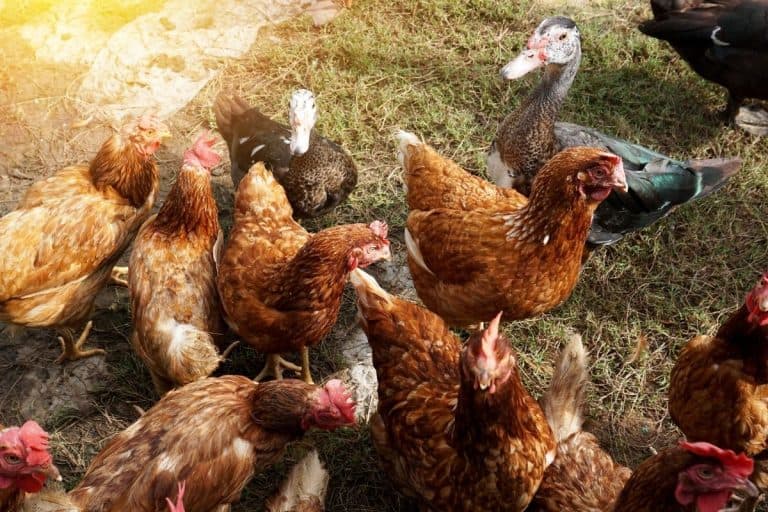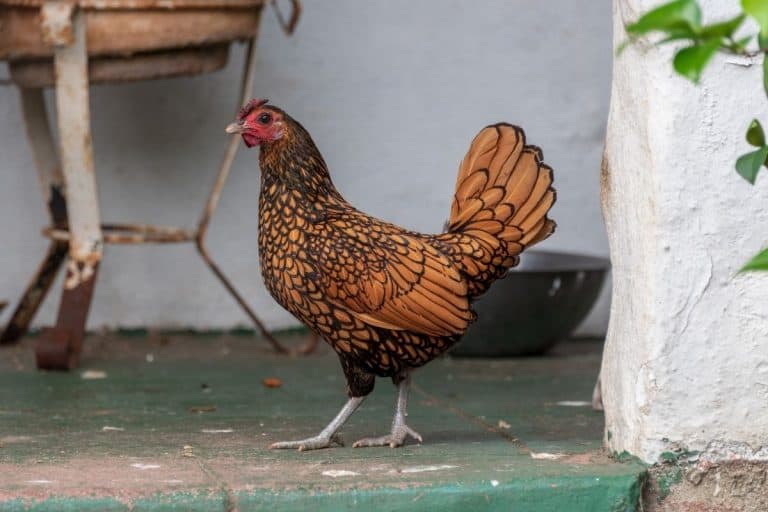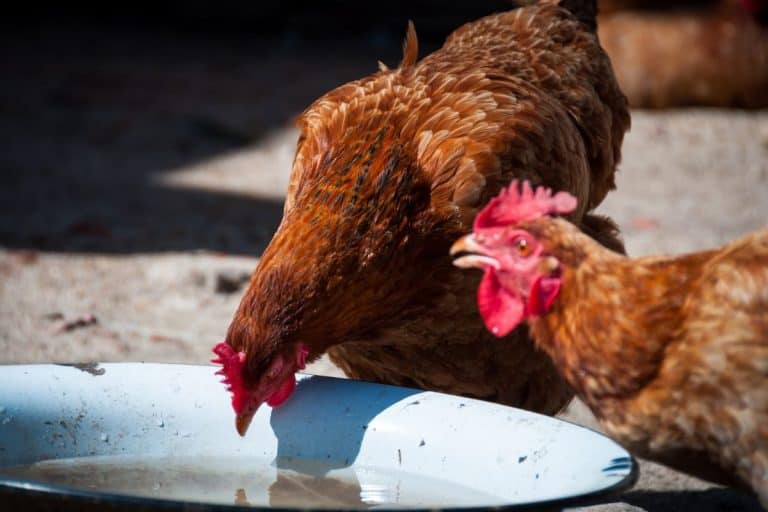Pros, Cons & Alternatives of Chicken Wing Clipping
Chickens are very intelligent birds and they are also very good flyers. Many chicken owners get annoyed with their chickens escaping the coop or fenced area and roaming outside or into the neighbor’s yards and might decide to clip the wings of their chickens.
In general, wing clipping is not necessary for all chickens. However, if they are causing nuisance or you want to limit their mobility it might be the only option. Wing clipping involves trimming down the primary feathers of chickens so they are unable to generate the lift required to fly.
Clipping the wings of a chicken might seem an easy task, but it’s not that simple and involves several precautions and the right technique to avoid hurting the chicken. We have put together this comprehensive guide regarding wing clipping in chickens along with the pros and cons and much more, so read on.
But before you dive into this topic, did you know I've got a page packed with my go-to chicken stuff? From the best feed to handy tools, it's all there. Don't you want the best for your flock? Check it out right here.
Should You Clip The Wings Of Your Chickens?
If you want your chickens to stay and roam in a fixed area but they are constantly escaping the fence and are going places where they shouldn’t be, you might need to clip their wings or if I say more clearly their primary feathers.
When chickens escape their dedicated area or pen it increases the risk of road accidents and dog attacks, and they can also decimate rooftops, destroy gardens, and might find the grass greener on your neighbor’s side leading to quarrels or arguments.
Wing clipping is one of the best solutions to limit the flying ability of chickens so they can’t escape the fence and becomes necessary if they are doing it regularly.
Wing of a chicken:
Before we move on to clipping you must know the basic structure of the chicken’s wing and feathers so you don’t clip the wrong ones.
A chicken wing mainly has three sets of feathers; primary, secondary, and covert feathers. Primary feathers are the longest feathers on a chicken wing and are also known as flight feathers.

Coverts are a set of tiny ferrets that overlap the primary feathers and help reduce drag and smooth the airflow over the wing.
The third set of feathers is known as secondary feathers and they also help generate lift while takeoff.
It is usually the primaries or flight feathers that are routinely clipped or trimmed in order to stop chickens from flying. There are 10 primary feathers on a chicken and all of them need to be cut half of their length to limit the flying ability of a chicken.
Wait, I have some recommendations for you!
Before you go any further, I want you to take a look at some of the recommendations I've handpicked for you. I think these are essential items you should have for your chickens flock. You can check them out and buy them directly from Amazon.
 | 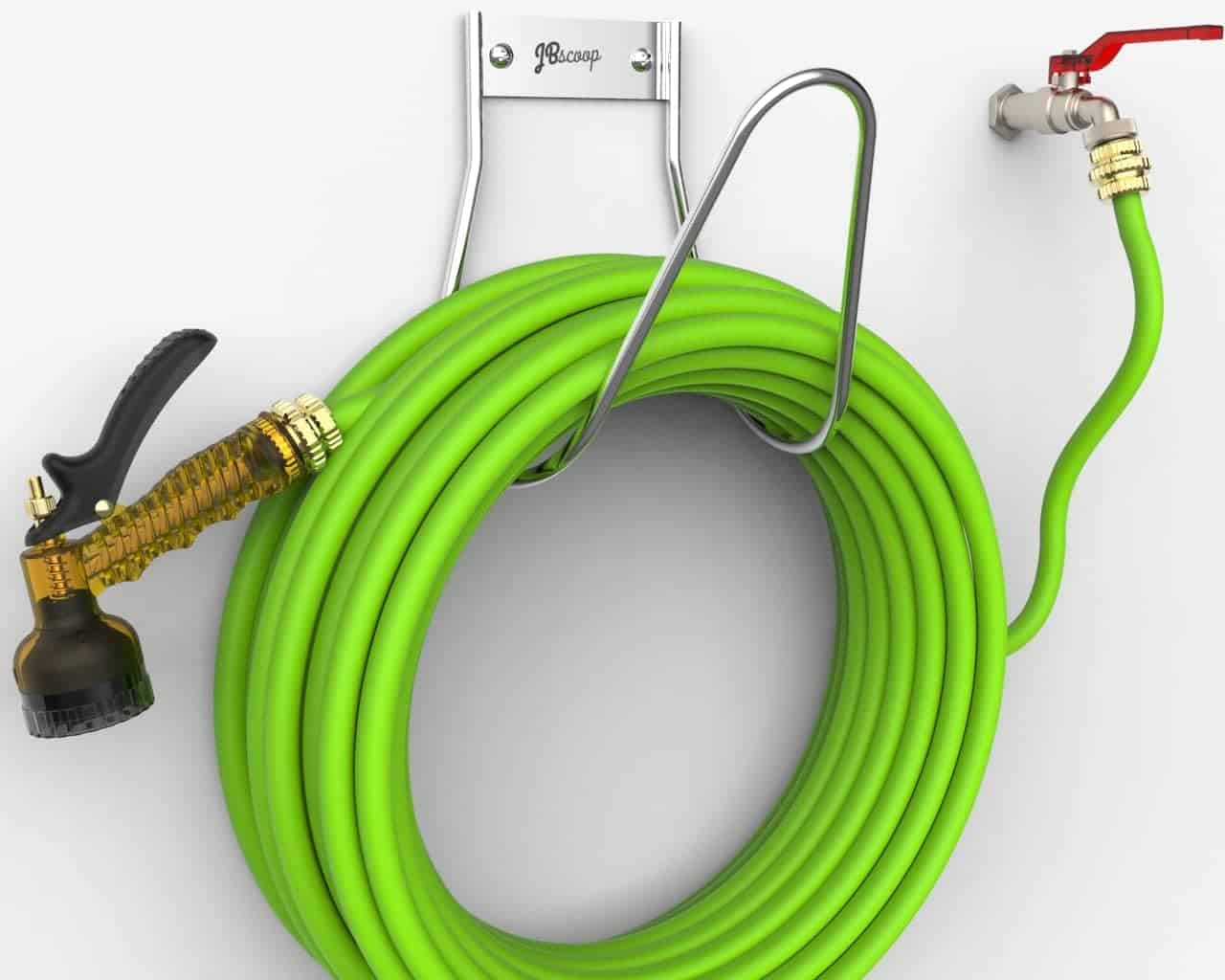 | 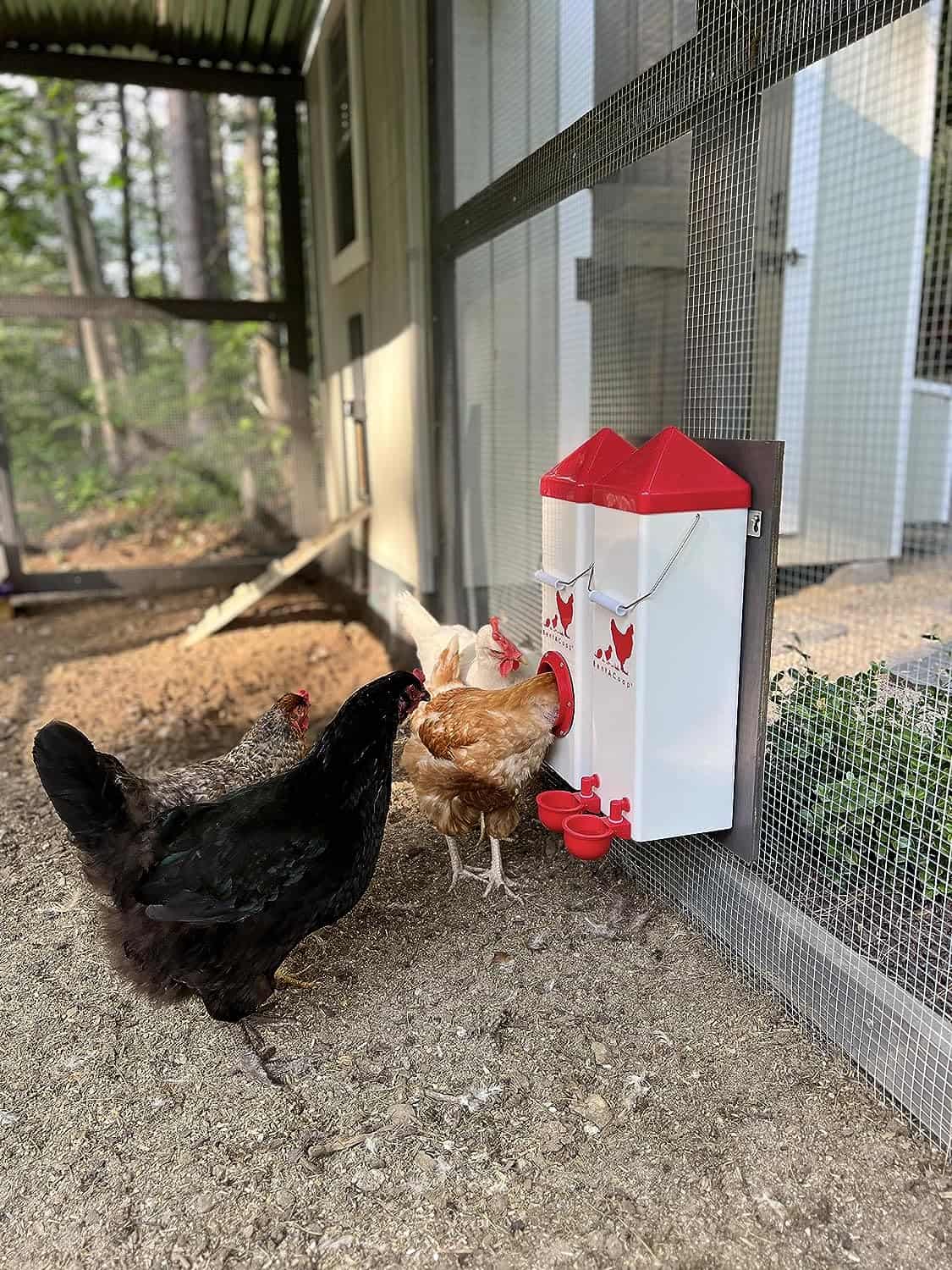 |  |
| Essential accessory for your coop | No more tripping over hoses! | Predator protection made easy | Comfort + style is possible |
Should You Clip One Wing Or Both Wings On A Chicken?
You can either clip one or both wings of your chickens but it depends on the breed of chicken and its ability to fly.
Clipping only one wing:
In most cases, it is only the feathers of any one of the wings that need to be clipped either the left wing or the right one.
If you have multiple chickens, decide whether you want to clip the right wing or the left, and do the same wing on all chickens.
For example, if you have clipped the left wing feathers on the first chicken, clip the left wing feathers of all the remaining as well so you are less likely to inadvertently trim both wings of any one of the chickens.
Clipping the primary feathers of any one of the wings disturbs the balance of the bird required to fly. One wing will generate lift while the other won’t, limiting flight.
Clipping both wings:
If your chicken is able to fly with one clipped you might need to clip the primary feathers of both of its wings to stop it from flying away.
How To Clip The Wings Of A Chicken?
Wing clipping in chickens mainly involves trimming the primary feathers (flight feathers). There are 10 primary feathers on each wing of a chicken and they need to be cut half their length to hamper the flying ability of a chicken.
In case the chicken can fly even after getting one wing clipped, more severe trimming might be required. You might need to clip the secondary feathers of the same wing to further limit their flying ability or clip the primaries to just below the tips of the converts.
I would never recommend trimming the primary feathers of a chicken shorter than one inch from the wing or about to the tips of the converts because this can be risky for the chickens and increases the possibility of injuries.
A step-by-step guide to clipping a chicken’s flight feathers:
Generally, when clipping the wing feathers of a chicken I would suggest having a partner to ensure maximum safety and efficiency.
- One person should hold both feet of the chicken while tightly securing it against their body.
- With the other free hand fan out the feathers of the wing that need to be clipped.
- The second person should then carefully locate the primary feathers and cut them using long, sharp scissors, half of their total length.
- Release the chicken and observe whether it is still able to fly or not.
- If the chicken is still hopping the fence, repeat the process but this time cut the primary feathers just below the tips of the converts.
How Often To Clip The Wings Of A Chicken?
Wing feathers regrow every time a chicken molts. Young chickens less than one year of age can molt multiple times throughout a year while adult chickens molt once a year.
Whenever new wing feathers emerge after molting and are fully grown and hardened, wing clipping is required. However, I would not recommend clipping the wings of young chickens less than a year old.
I would never recommend clipping newly emerging feathers because they have blood vessels that nourish and support their growth. Trimming these feathers will cause excessive bleeding and can put the chicken under stress.
I would advise, first identifying if the feather is ready to be trimmed or not. To identify, first spread the wing of a chicken and observe the underside of the feather shafts to look for soft, pink, and immature shafts.
Once the feather is fully grown the blood vessels recede from the shaft and they appear paler. They also become hard and hollow ready to be clipped.
Does Wing Clipping Hurt Chickens?
Wing clipping is a completely painless process and doesn’t hurt chickens at all if done the right way.
Ideally, you should avoid clipping newly growing feathers as they contain blood vessels and may also have a few nerves which can cause bleeding and pain.
Also, hold the chickens securely so they are unable to flap their wings or move their body, decreasing the risk of bone fracture or any injury. Avoid clipping the wings close to the skin because doing so can result in a skin laceration.
Pros & Cons Of Clipping Wings Of Chickens
Following are some of the pros and cons of clipping wing feathers of chickens, that you must know before doing it.
Let’s start with a summary, and I’ll then explain what I mean in each case:
| Pros | Cons |
|---|---|
| Reduces neighbor conflicts | Vulnerability to ground predators |
| Protects gardens | Alters grooming behaviors |
| Prevents roof/tree climbs | Risk of climbing injuries |
| Minimizes feather mess | May reduce fertilized eggs |
| Reduces aerial predator risk | Risk of stress/injury |
| Harder defense against aggression |
Pros:
- Clipping the wings of chickens prevents them from entering neighbors’ yards or messing with the dog next door. This reduces nuisance and decreases the possibility of potential conflicts.
- If chickens are unable to fly and escape the fenced area your garden will remain protected from their beaks and claws.
- You don’t have to worry about your chickens running over rooftops or climbing trees once their wings are clipped and they will be easy to catch.
- Chicken regularly engages in fights with each other which often leads to their feathers falling out. However, when they are clipped they will create less mess for you to clean.
- As chickens are unable to escape fencing and climb high spots due to clipped wings, there is less possibility of attack from aerial predators.
Cons:
- Clipping the wings makes the chicken vulnerable to ground predator attacks as they can’t escape efficiently.
- It is natural for chickens to regularly groom themselves and preen their wing feathers. However, once they are clipped they can’t do this anymore and this may lead to changes in natural behavior.
- Clipping wings makes chickens off balance in flight, so they can get injured while climbing or jumping from high spots.
- Clipped wings can put roosters off balance when they attempt to mate with a hen so there may be less fertilized eggs.
- If you don’t handle the chicken properly while clipping their wings or cause an injury they can get stressed out.
- Chickens with clipped wings find it harder to escape and defend themselves against aggressive flock members.
Best Alternatives To Wing Clipping In Chickens?
If you are not a fan of wing clipping, I would suggest the following alternatives which are both safe and effective for your chickens:
Elevated fence:
One of the better alternatives to wing trimming, especially for heavy chicken breeds, is to raise the height of the fence so they can’t fly over it.
Netting:
If you keep your chickens in a small yard or space, placing a lightweight netting over the top of the fence or run can prevent them from escaping, while they can still keep their feathers.
Secure enclosure:
House your chickens in a secure environment with plenty of perches and platforms for them to climb so they don’t feel the need to fly away.
Brailing:
Brailing is a process in which the wing of a chicken is tied using a soft cord or strap known as a brail. The chicken won’t be able to open or extend its wing to fly after a brail is placed. If done right it doesn’t cause any pain or discomfort for the chicken.
Brailing is usually preferable for young chickens that will eventually grow heavy enough so they can’t fly. For large chickens, a paracord is ideal for brailing that is about 40 cm long. For Bantans a flat shoestring is a good option about 30 cm long.
Brailing involves folding the string in an appropriate way and placing a few knots around the wing of the chicken. You can see the complete process of placing a brail here.
Just make sure it’s not too tight that it restricts wing circulation, and leave a gap big enough for your two fingers to go under the brail (one for a Bantam).



